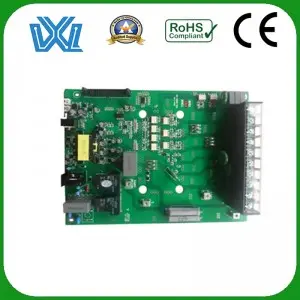Have you ever wondered how some of the incredible electronic devices we use in our everyday lives are made? The answer lies in the hands of PCB designers, who play a vital role in the manufacture of printed circuit boards (PCBs). If you have a passion for electronics and aspire to become a skilled PCB designer, then this blog is the perfect start to your journey. In this comprehensive guide, we’ll explore the steps and skills needed to become a successful PCB designer.
Understanding the role of a PCB designer
The primary responsibility of a PCB designer is to transform a conceptual electronic circuit into a well-designed and fully functional PCB layout. To excel in this area, a solid understanding of circuit design, schematic capture, PCB layout and manufacturing processes is essential. Let’s delve into the necessary steps to start a career as a PCB designer.
1. Build a solid electronics foundation
To become a competent PCB designer, you must acquire a solid foundation in electronics. Begin by becoming familiar with the fundamentals of electricity, circuits, and electronic components. Taking an electrical engineering course or pursuing a degree in electrical engineering provides a comprehensive understanding of these concepts.
2. Familiar with PCB design software
Mastering PCB design software is a basic requirement for any aspiring designer. Popular software packages such as Altium Designer, Eagle, KiCad, etc. are widely used in the industry. Invest time in learning these tools and becoming familiar with their features, user interface, and libraries.
3. Develop circuit design and analysis skills
A successful PCB designer needs to be proficient in circuit design and analysis. Learn how to create circuit schematics, identify component values, and simulate circuit behavior using tools such as SPICE (Simulation Program with Integrated Circuit Emphasis). These skills will aid in troubleshooting and optimization during the design process.
4. Learn PCB layout design technology
Mastering PCB layout design is critical to a successful career as a PCB designer. Focus on understanding design rules, component placement, signal integrity, and power distribution. Become familiar with manufacturing constraints to ensure your designs are manufacturable and cost-effective.
5. Stay abreast of emerging technologies and industry trends
The field of electronics is constantly evolving. As a PCB designer, it’s critical to be aware of the latest technologies, component trends and industry standards. Join professional forums, attend conferences and network with industry experts to stay updated on the latest developments.
6. Practice, practice, practice
Like any skill, becoming a skilled PCB designer takes practice. Seek opportunities to work on real-world projects, collaborate with experienced designers, and receive feedback from mentors. Work on personal projects to sharpen your skills and build a diverse portfolio.
7. Continuous learning and improvement
Never stop learning in this field. The electronic world is dynamic and advances are made every day. Keep yourself abreast of new approaches, design techniques, and software updates. Seek certification or continuing education to enhance your credentials and broaden your career prospects.
Becoming a PCB designer is an exciting career choice for those with a passion for electronics, creativity and attention to detail. A solid foundation in electronics, proficiency in PCB design software and continuous improvement of skills are the keys to success in this field. Remember that practice, dedication, and keeping up with emerging technologies will put you on the path to becoming a successful PCB designer. Embrace the journey and never stop learning. Good luck!
Post time: Aug-28-2023

